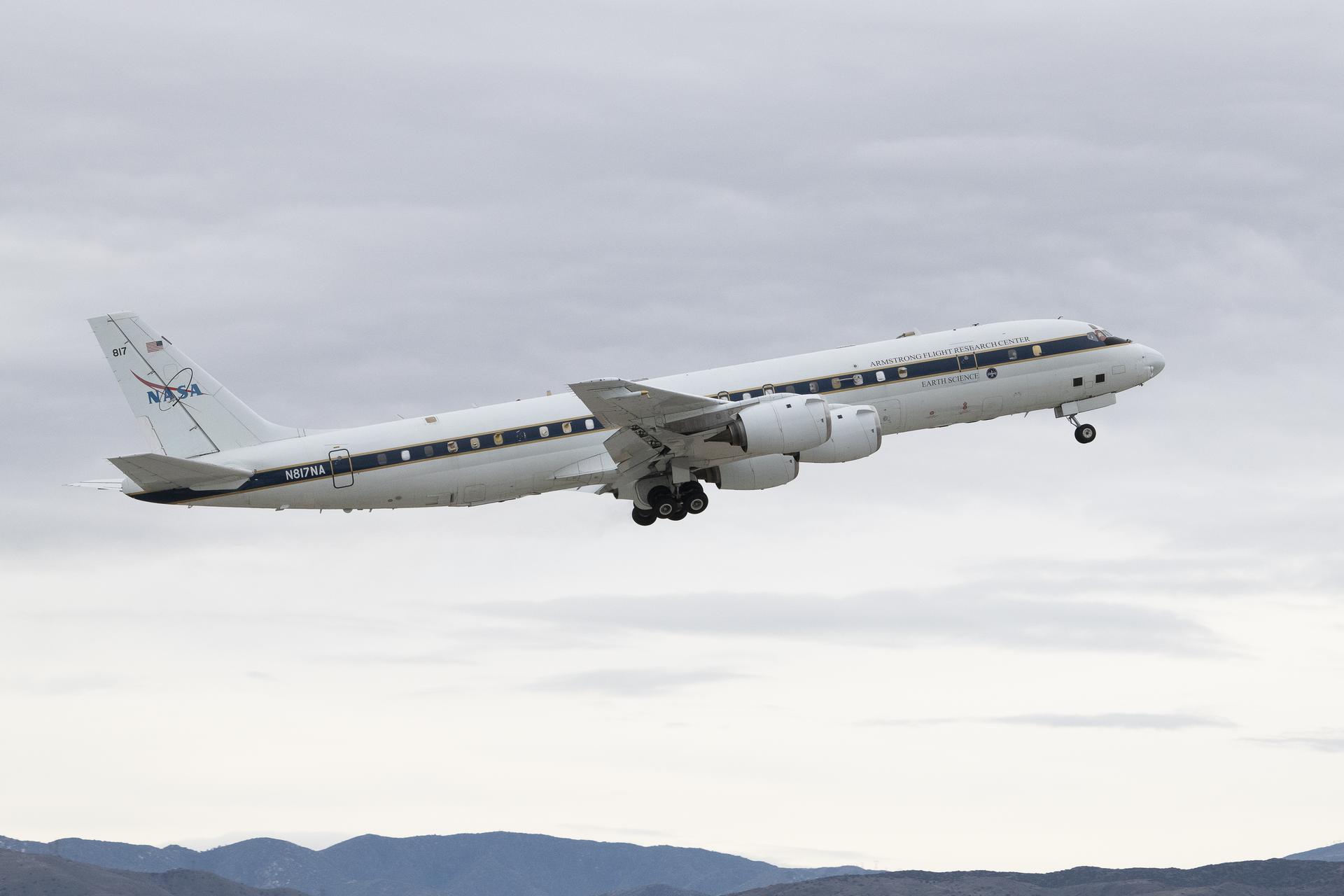NASA’s DC-8, a venerable aircraft boasting 55 years of service renowned for its robust research capabilities, concluded its airborne exploration over Chiang Mai province on Monday, March 18th. This marked the culmination of its mission to conduct an extensive air quality study across Northern Thailand and various regions of the country.
Under the auspices of the Airborne and Satellite Investigation of NASA’s Asian Air Quality (ASIA-AQ) project, coordinated by the National Astronomical Research Institute of Thailand (NARIT), the DC-8 embarked on a critical journey aimed at scrutinizing the dispersion of air pollutants across different atmospheric layers. Employing a low-altitude ‘missed approach’ maneuver at 10:30 am, the aircraft executed precise techniques essential for capturing intricate environmental data crucial for the study’s objectives.
This mission signifies one of the final endeavors for the DC-8, slated for retirement following the completion of five scheduled flights between March 16th and 26th. Departing from U-Tapao Airport in Rayong, each flight spanned approximately eight hours, surveying diverse parts of Thailand. This collaborative venture represents an international endeavor to enhance comprehension of air pollution, with NARIT and the Geo-Informatics and Space Technology Development Agency (GISTDA) spearheading Thailand’s involvement alongside partners from South Korea, Taiwan, the Philippines, Malaysia, and Thailand itself.
In conjunction with the DC-8, NASA also employs a Gulfstream III aircraft to conduct complementary studies, focusing on generating a horizontal profile of air quality. Both aircraft operate from U-Tapao Airport, albeit with the Gulfstream III operating within a more delimited geographic area.
